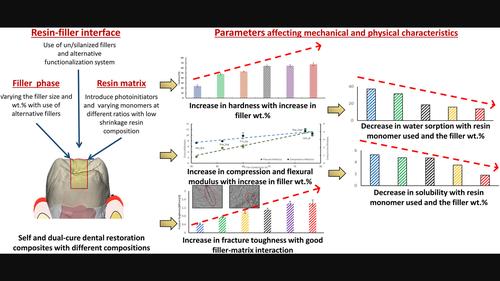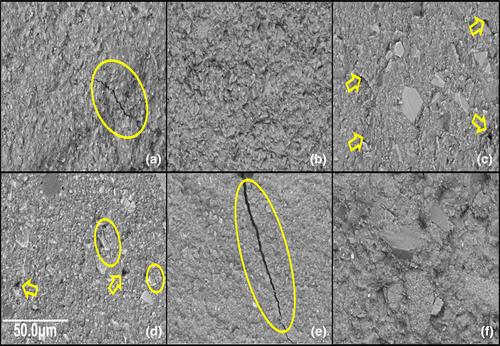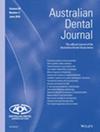Comparative analysis of self-cure and dual cure-dental composites on their physico-mechanical behaviour
Abstract
Background
Clinical practitioners may have become familiar with the rapid transformation of dental composites. However, they may not scientifically understand the factors influencing the mechanical and physical properties. Scientific knowledge of filler-resin interaction can significantly improve clinical understanding of resin composites. Several independent studies have examined the mechanical and physico-mechanical properties of dental resin composites; however, no comprehensive study has examined the influence of fillers and resin materials on the physico-mechanical properties of both self-cure and dual-cure composites.
Methods
This study performed investigations on the physico-mechanical behaviour of four commercially available dual-cure dental composites (Bioactive, Fill Up!, Surefil One, Cention N) and two commercially available self-cure dental composites (Stela Capsule and Stela Automix). Test specimens for flexural and compressive strength, microhardness, fracture toughness, and hydrolytic behaviour were prepared and tested as per respective standards. The data sets were statistically analysed using one-way ANOVA and Tukey's post-hoc comparison.
Results
There was a substantial variation in flexural strength and modulus values in this study, ranging from 32.0 to 113.4 MPa and 2.36 to 12.07 GPa, respectively. Similarly, there were significant differences in compressive strength between the materials in this study, ranging from 119.3 to 223.5 MPa. The highest fracture toughness value was found to be 1.41 MPa.m0.5, while the lowest value was 0.43 MPa.m0.5. Variations in surface microhardness were significant (24.11–68.0 N/mm2), which correlated with the filler content. Water sorption and solubility demonstrated high variations among materials, with Surefil One exceeding ISO 4049 thresholds significantly.
Conclusions
A linear correlation can be established between surface microhardness (HV) and flexural and compressive moduli, as well as filler content (wt.%). However, both flexural and compressive strengths are impacted by the resin's constituent monomers and the resin-filler matrix's cross-linking capability. Additionally, factors such as filler size, shape, and the cross-linking ability of the resin-filler matrix play a crucial role in fracture toughness and the propagation of cracks within the restoration. Also, resin monomers and filler particle size affect the hydrolytic degradation characteristics of composites, which can also affect their mechanical properties. © 2023 Australian Dental Association.



 求助内容:
求助内容: 应助结果提醒方式:
应助结果提醒方式:


